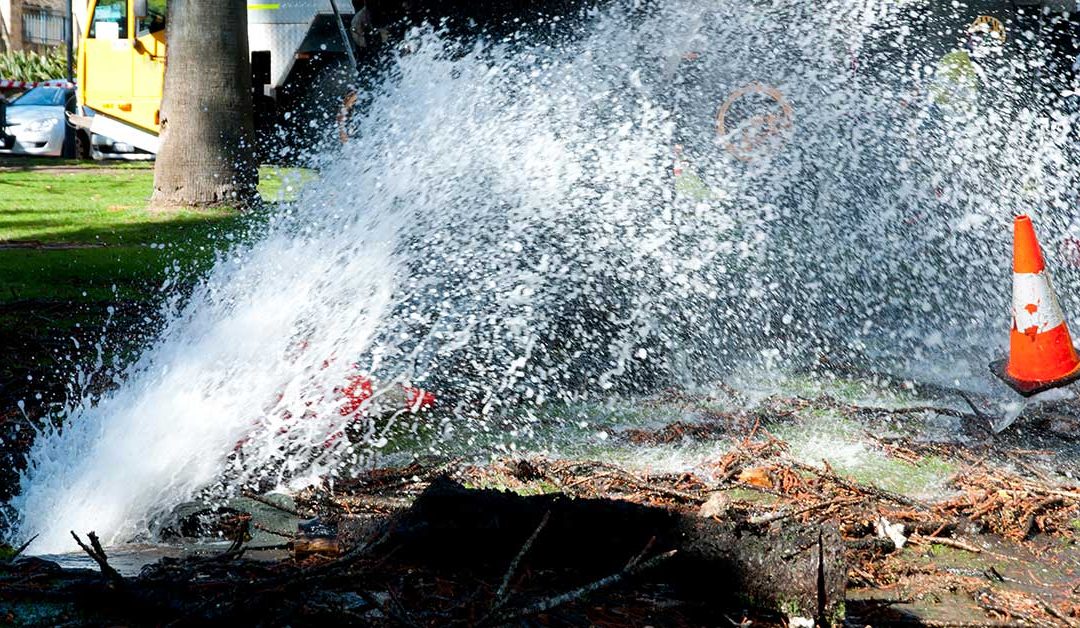The water pipeline that burst open and flooded a historic street in Midtown late last month was laid below the cobblestone-covered street when Grover Cleveland was president.
That there’s a 132-year-old 30-inch water main supplying water to one of Detroit’s oldest and quickly transforming neighborhoods is not a surprise to city officials who have been trying cobble together money every year to address decades of disinvestment in underground infrastructure in Michigan’s largest city.
In fact, it’s not the Victorian-era pipes that the city’s utility agencies always worry about, said Gary Brown, director of the Detroit Water and Sewerage Department.
“Just because it’s a hundred years old, some of the hundred-year-old material is actually better than the pipes put in after World War II,” said Brown, who is pretty sure there’s still water flowing through wooden pipes along older streets between Jefferson Avenue and the Detroit River.
The pipeline break along historic West Canfield Street between Second and Third streets damaged lawns, moved sidewalk flags and caused part of the street to cave in. It also caused some of the trendy shops and restaurants like Jolly Pumpkin Pizzeria & Brewery on Canfield between Cass Avenue and Second to temporarily close on a Saturday in late July.
In this part of Detroit, water main breaks and disruptions in service are an annual occurrence — and a cost of doing business, said Scott Lowell, owner of the Traffic Jam & Snug restaurant at Second and Canfield.
“We have a water main break here on Second about once a year,” Lowell said. “It’s not newsworthy. We have to close for business. They come out, dig it up, replace it and turn it back on.”
Every water main break in Detroit may not be newsworthy.
But it’s certainly noteworthy that as this city experiences revitalization, an influx of new residents and businesses and nears the four-year mark since emerging from a painful bankruptcy, the balance sheets showing budget surpluses don’t tell the whole story.
While Second Avenue looks nice, with fresh asphalt, painted bike lanes and once-blighted buildings getting rehabilitated, there’s an aging infrastructure lurking below that went largely neglected for a half-century or more that needs to be fixed eventually.
“We didn’t wind up in bankruptcy in one day. We worked our way there over decades,” said Brown, a retired deputy police chief-turned-municipal administrator.
The bankruptcy itself helped free up more badly needed cash for infrastructure.
The spinoff of DWSD’s wholesale water supply operations to the Great Lakes Water Authority came with a $50 million annual lease payment for Detroit’s assets that have supplied water to 4 million people in southeast Michigan for nearly 60 years.
DWSD, which now is focused on retail water sales to residential and commercial customers in Detroit, borrowed $500 million against the $50 million annual lease payment to fund five years of infrastructure improvement projects. About $13 million of the lease payment from GLWA goes to repaying the bonds each year, Brown said.
In the 15 years leading up to Detroit’s 2013 bankruptcy filing, less than one-half of one percent of the city’s water main pipelines were replaced, and breaks and water flooding city streets became as normal as broken streetlights, Brown said.
With the new lease payment, which is largely shouldered by suburban customers, Detroit is replacing 2 percent of its aging infrastructure annually, according to Brown.
“Now that the dollars are available to rebuild the system, you should start to see over the next three to five years the frequency of breaks go down,” Brown said.
That would be welcome news to business owners like Lowell, who also have to deal with occasional power outages that shut down his restaurant for hours at a time.
Lowell also recognizes that Detroit is not alone in facing a looming crisis in neglected and outdated infrastructure.
Last fall, up to 300,000 residents and businesses in Oakland County lost water for several days after a 48-inch water main broke in Farmington Hills, exposing a lack of redundancy in the system.
In late 2016, Fraser’s infamous 250-foot-long sinkhole caused a sewer line to collapse, requiring a $75 million fix to restore the flow of waste for a half-million Macomb County residents.
“Maybe we’ll be the innovator in how we solve it,” Lowell said.
READ MORE AT: http://bit.ly/2M7XpnG

